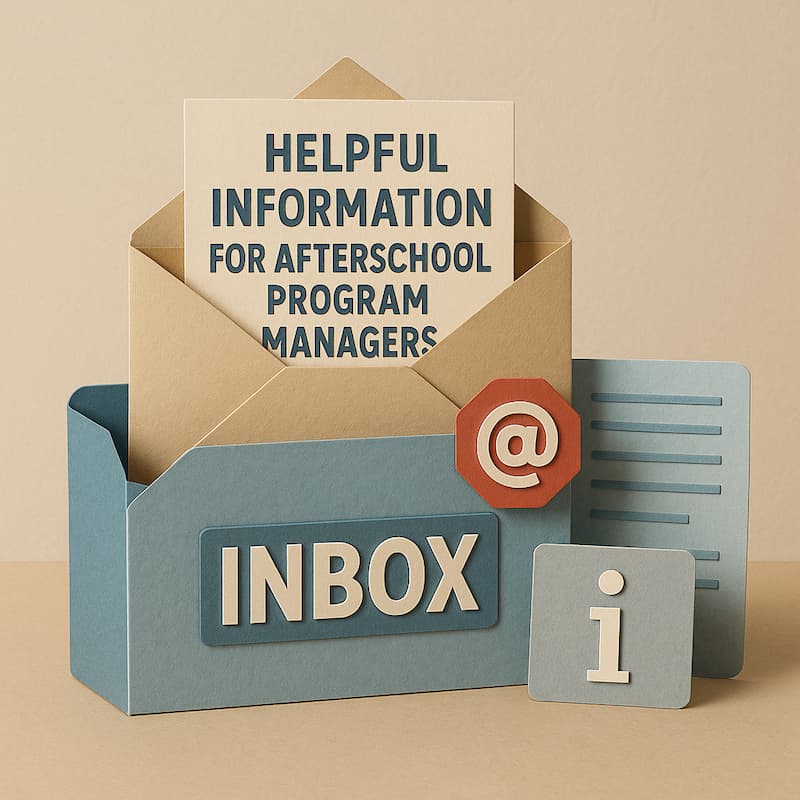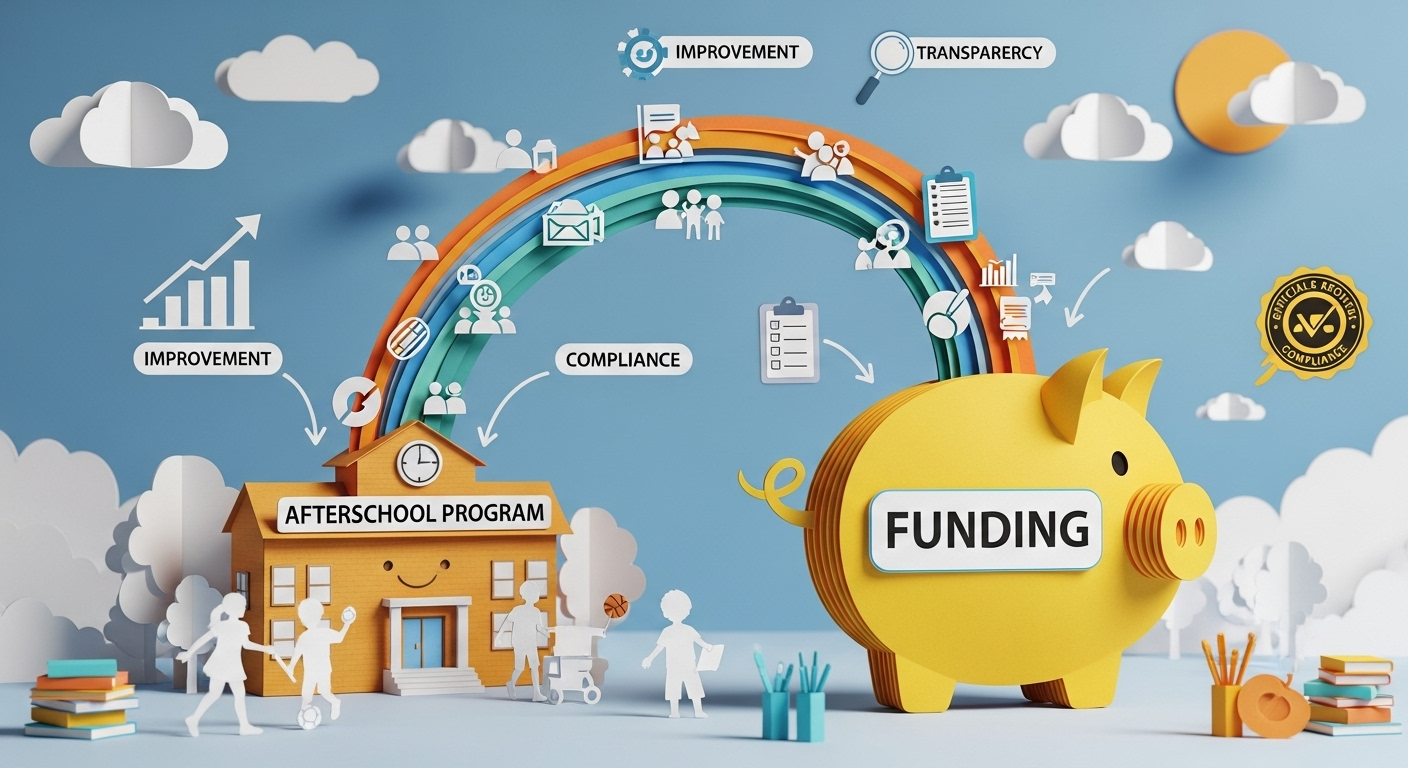
What Afterschool Programs Must Report for CALPADS
What Afterschool Programs Must Report for CALPADS
For California school districts and afterschool program staff, understanding your data reporting responsibilities for the California Longitudinal Pupil Achievement Data System (CALPADS) is essential. CALPADS collects individual student data required for state and federal reporting mandates like the Every Student Succeeds Act (ESSA). This information directly influences your program funding, compliance, and overall student success. Accurately reporting data for afterschool programs, including the Expanded Learning Opportunities Program (ELOP), After School Education and Safety (ASES), and 21st Century Community Learning Centers (21st CCLC) helps demonstrate your program's effectiveness. With the correct tools and procedures, managing CALPADS reporting becomes less complex and more manageable.
Essential Student Demographics and Enrollment Data
All CALPADS reporting depends on precise and accurate student demographic and enrollment details. Two foundational files support this process. The Student Information File (SINF) captures demographic details, including a student's legal name, birth date, gender, and race or ethnicity. The Student Enrollment File (SENR) tracks a student's enrollment status at specific schools within a Local Educational Agency (LEA). It documents official start and end dates for enrollment periods.
These foundational data points typically reside in your district's Student Information System (SIS). Ensuring your SIS information remains current is critical. Mistakes or outdated information can significantly impact your afterschool program reporting. Each student's unique Statewide Student Identifier (SSID) links directly to their demographic and enrollment records. Maintaining accurate foundational data sets the stage for streamlined CALPADS submissions and compliance.
Reporting Student Participation
The Student Program (SPRG) file represents the most critical component for afterschool programs in CALPADS reporting. This file documents which students participate in specific educational programs, including ELOP, ASES, and 21st CCLC. Each entry in the SPRG file includes the student's SSID, the specific program code (such as 4010 for ELOP), and the dates of participation.
Additionally, accurately reporting Program Membership Start Dates and Program Membership End Dates is also important. These dates clearly establish a student's participation window. To capture these accurately, program coordinators should maintain detailed enrollment and withdrawal records. Effective tracking requires more than simple daily attendance checks, and coordinators must document when students officially enter or exit program offerings. Precise SPRG data not only ensures regulatory compliance but also helps demonstrate your program's reach and effectiveness to secure ongoing funding.
Attendance Data Supports Accurate Reporting
Although daily afterschool attendance does not directly appear as a separate CALPADS submission, it fundamentally supports accurate reporting. Attendance data provides the foundational evidence of student participation between reported start and end dates. For example, consistent attendance records validate claims made in your SPRG file, enhancing data reliability during audits.
For ELOP programs specifically, attendance data directly impacts funding calculations through Average Daily Attendance (ADA) metrics. While this calculation occurs at the district level rather than through direct CALPADS submission, maintaining accurate attendance records ensures your program can support funding justifications. Digital attendance tracking systems can streamline this process while providing the detailed records necessary for both internal management and external reporting requirements.
Understanding Program Codes and Classifications
Each afterschool program type requires specific program codes in CALPADS submissions. ELOP programs use code 4010, while ASES programs typically use code 4020. 21st CCLC programs may use different codes depending on their specific funding source and structure. Understanding these distinctions ensures accurate classification in your SPRG submissions.
Beyond basic program codes, CALPADS also captures information about program intensity and duration. This includes whether students participate full-time or part-time and the expected hours of weekly participation. Accurate coding helps state agencies understand your program's scope and impact, supporting both compliance efforts and future funding decisions.
Data Quality and Validation Procedures
Maintaining high data quality requires systematic validation procedures throughout the reporting cycle. Regular data audits help identify discrepancies between your program records and district SIS data. Common issues include mismatched student identifiers, incorrect program codes, or inaccurate participation dates.
Establishing monthly data review cycles allows programs to address errors proactively rather than during critical submission periods. Training staff on proper data entry procedures and the importance of accuracy creates a culture that supports successful CALPADS reporting. Documentation of validation procedures also demonstrates your program's commitment to data integrity during external reviews.
Technology Integration and Automation
Modern afterschool program management systems can significantly streamline CALPADS reporting requirements. Integration between program management platforms and district SIS systems reduces manual data entry while ensuring consistency across systems. Automated data synchronization helps maintain accurate student rosters and participation records.
When evaluating technology solutions, prioritize systems that offer direct integration capabilities with your district's SIS platform. Features like automated SPRG file generation, real-time data validation, and comprehensive reporting dashboards can transform CALPADS compliance from a burden into a strategic advantage for program improvement.
Preparing for Submission Deadlines
CALPADS operates on specific submission windows throughout the academic year, with the End-of-Year (EOY) submission being particularly critical for afterschool programs. Preparing for these deadlines requires year-round attention to data quality rather than last-minute scrambling.
Developing a submission calendar that aligns with your program's operational schedule helps ensure adequate preparation time. Key milestones should include data validation checkpoints, staff training updates, and system testing periods. Early preparation not only reduces stress but also allows time for addressing any technical issues that may arise.
Leveraging CALPADS Data for Program Improvement
Beyond compliance requirements, CALPADS data offers valuable insights for program enhancement. Analyzing participation patterns, demographic trends, and retention rates can inform strategic decisions about service delivery, staffing, and resource allocation.
Regular review of your CALPADS submissions can reveal opportunities for program growth and improvement. For example, identifying underserved student populations or participation gaps can guide outreach efforts and program modifications. This data-driven approach demonstrates your program's commitment to continuous improvement and student success.
Building Sustainable Reporting Practices
Successful CALPADS reporting requires sustainable practices that can adapt to changing requirements and staff transitions. Documenting procedures, maintaining training materials, and establishing clear roles and responsibilities ensures continuity regardless of personnel changes.
Investing in staff development and system improvements pays long-term dividends through improved data quality, reduced reporting errors, and enhanced program effectiveness. By treating CALPADS reporting as an integral part of program operations rather than a separate compliance burden, afterschool programs can maximize both their impact and their sustainability.






